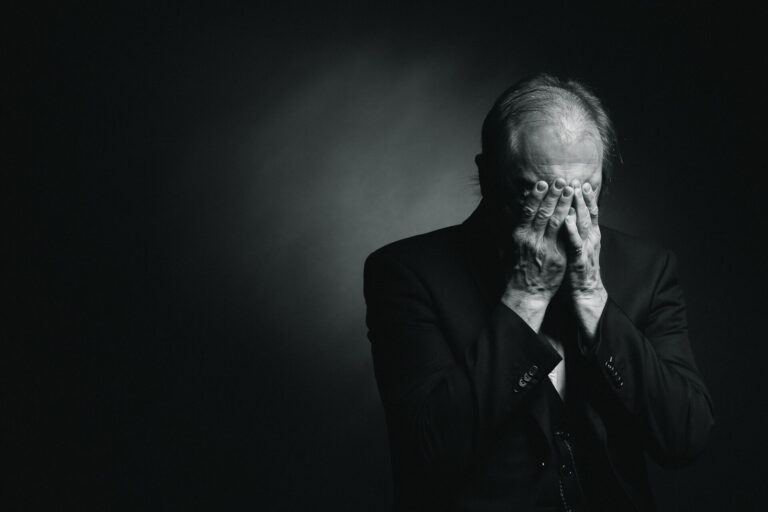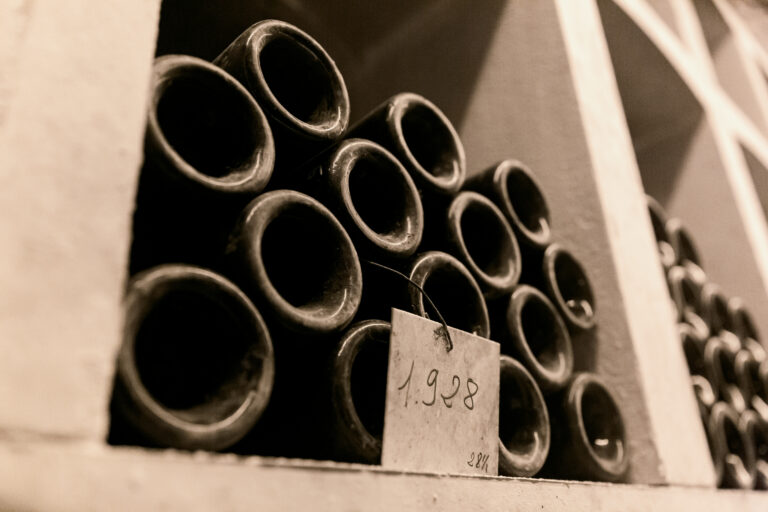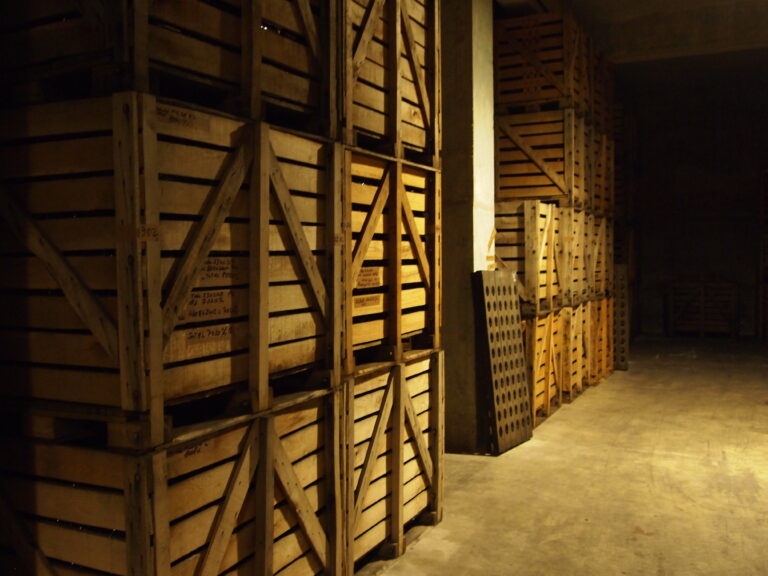Let Champagne Club by Richard Juhlin take You on a journey of the icon Louis Roederer ‘Cristal Rosé’. [read the full champagne story]
Estimated reading time: 9 minutes

‘Cristal Rosé is not only the most expensive rosé Champagne — it is obviously the best.’
Champagne Club by Richard Juhlin’
The Birth of Cristal Rosé
Cristal Rosé was first introduced in 1974 by Louis Roederer, a historic champagne house founded in 1776 in the Champagne region of France. Although the house already had a reputation for producing exceptional champagnes, it was the creation of Cristal Rosé that elevated the brand to new heights.
The Craftsmanship Behind Cristal Rosé
Cristal Rosé is the result of a meticulous and highly refined production process, reflecting the philosophy of balance, purity, and elegance that defines all Louis Roederer champagnes. The champagne is made primarily from Pinot Noir grapes, which are sourced from Roederer’s own biodynamic vineyards in the Montagne de Reims and Vallée de la Marne regions. The terroir, with its unique chalk and clay soils, plays a critical role in imparting the distinctive minerality and structure of Cristal Rosé.
One of the key techniques in producing Cristal Rosé is the saignée method, where the Pinot Noir grapes undergo a short maceration period to extract color and flavor from the grape skins. This results in a more intense, complex, and full-bodied rosé compared to other champagnes that are made by simply blending red and white wines. The wine is then blended with Chardonnay to create the final product, adding finesse and aromatic depth to the rosé.
Aging is another critical aspect of Cristal Rosé’s character. The champagne is aged for an extended period—typically between six to eight years—on the lees, which imparts complexity and richness to the wine. This long aging process helps to enhance the wine’s fine mousse, creamy texture, and remarkable balance between acidity and fruit.

Evolution of Cristal Rosé Through the Decades
The 1970s: A New Beginning
The debut of Cristal Rosé in 1974 marked a significant milestone in Louis Roederer’s history. At the time, rosé champagnes were not as widely regarded as they are today, but Cristal Rosé quickly set a new benchmark for quality. It gained attention for its elegance, vibrant fruit flavors, and subtlety, appealing to the tastes of elite connoisseurs. While its initial production quantities were limited, Cristal Rosé began to carve out a niche as a wine for special occasions and celebrations.
The 1980s and 1990s: Growth in Prestige
During the 1980s and 1990s, Cristal Rosé continued to grow in prestige, gaining a loyal following among high-profile figures in fashion, entertainment, and politics. Its association with luxury was solidified as it became a symbol of wealth and success. Limited releases, exquisite craftsmanship, and the champagne’s ability to age gracefully contributed to its appeal as a collector’s item.
Cristal Rosé also benefited from the broader trends in champagne consumption during these decades. The rise of celebrity culture and the increasing visibility of champagne in pop culture—through music, film, and high-end events—enhanced its aura of exclusivity. By the 1990s, Cristal Rosé was a staple at luxury events and private gatherings, further elevating its reputation as one of the finest champagnes in the world.
The 2000s: A Rosé Renaissance
The early 2000s saw a resurgence in the popularity of rosé wines, including champagnes. Cristal Rosé, having already established itself as a leader in the category, continued to be at the forefront of this renaissance. The 2002 vintage, in particular, was highly acclaimed, receiving praise for its depth, complexity, and aging potential. Wine critics and sommeliers lauded Cristal Rosé for its ability to evolve over time, with some vintages improving after decades in the bottle.
In this era, the Roederer house also intensified its focus on sustainability and biodynamic farming, ensuring that the grapes used in Cristal Rosé were cultivated with minimal environmental impact. This commitment to sustainability further enhanced the brand’s prestige and appeal to modern consumers who value eco-friendly practices.
The 2010s and 2020s: Continued Excellence and Innovation
In the last two decades, Louis Roederer has continued to innovate while staying true to its core principles of quality and craftsmanship. The house expanded its use of biodynamic practices across its vineyards, ensuring that the terroir’s natural characteristics are fully expressed in each bottle of Cristal Rosé.
Throughout the 2010s and 2020s, Cristal Rosé has maintained its position as one of the world’s premier luxury champagnes. New vintages have consistently garnered critical acclaim, with wine experts praising the champagne’s impeccable balance, complexity, and ability to reflect the nuances of each vintage year. In 2024, the 2012 and 2013 vintages were considered exceptional, showcasing the precision and expertise of the winemaking team at Roederer.
The Cristal Rosé Experience
Cristal Rosé is more than just a beverage; it is an experience. The champagne is often served at the world’s most exclusive events, from private yacht parties to grand galas, and it is regularly featured on the wine lists of the most prestigious restaurants globally. The iconic clear crystal bottle, with its gold label and flat-bottomed design, has become a symbol of status and opulence.
Tasting Cristal Rosé is a multisensory experience. The champagne’s delicate salmon-pink hue is visually striking, while its fine bubbles create an elegant, persistent mousse. On the nose, Cristal Rosé offers a bouquet of red fruits—such as raspberries, strawberries, and cherries—complemented by subtle notes of citrus, almond, and brioche. On the palate, it is both rich and precise, with layers of complexity that reveal themselves over time.

Iconic Vintages of Cristal Rosé
Over its 50-year history, Cristal Rosé has produced several iconic vintages that stand out for their excellence and aging potential. Some of the most notable vintages include:
- 1979: One of the earliest standout vintages, offering remarkable freshness and balance, with notes of red fruit and mineral complexity.
- 1988: The 1988 vintage for Champagne was by most accounts excellent. The growing season began with a warm spring which transitioned into a hot June which ensured both a successful budburst and flowering.
- 2002: Often considered one of the finest vintages of the early 21st century, praised for its depth, intensity, and capacity to age for decades.
- 2008: Known for its exceptional structure and precision, this vintage is widely regarded as one of the greatest in the history of Cristal Rosé.
- 2012: An extraordinary vintage characterized by its vibrant acidity, rich fruit profile, and potential for long-term aging.
- 2013: The relative abundance of exciting, delicious wines in 2013 shows that even when harvest conditions are not promising that one should not rule out any given vintage until the region’s most talented winemakers have had their say.
The Legacy of Cristal Rosé
As Cristal Rosé celebrates its 50th anniversary, it remains a testament to the enduring appeal of craftsmanship, tradition, and innovation in winemaking. Over five decades, this extraordinary champagne has become a symbol of luxury and exclusivity, enjoyed by royalty, celebrities, and discerning connoisseurs around the world.
The legacy of Cristal Rosé is not just in its exquisite taste but also in its ability to transcend time and trends. Whether it is enjoyed young or aged for decades, each bottle of Cristal Rosé offers a unique expression of the artistry and dedication of Louis Roederer’s winemaking team. As the champagne world evolves, Cristal Rosé will undoubtedly continue to hold its place as one of the most coveted and celebrated champagnes in history.
Conclusion
The 50-year journey of Cristal Rosé is a story of passion, excellence, and innovation. From its origins in the 1970s to its present-day status as a symbol of luxury, Cristal Rosé continues to captivate champagne lovers with its unparalleled quality and timeless elegance. With its commitment to biodynamic practices and its focus on expressing the finest characteristics of the Champagne terroir, Cristal Rosé is poised to maintain its legacy for generations to come.


| VINTAGE | CHAMPAGNE | SCORE | POTENTIAL SCORE |
| 1979 | Louis Roederer ‘Cristal Rosé’ | 99 | 99 |
| 2013 | Louis Roederer ‘Cristal Rosé’ | 98 | 99 |
| 1988 | Louis Roederer ‘Cristal Rosé’ | 98 | 98 |
| 2012 | Louis Roederer ‘Cristal Rosé’ | 97 | 98 |
| 1976 | Louis Roederer ‘Cristal Rosé’ | 97 | 97 |
| 1981 | Louis Roederer ‘Cristal Rosé’ | 97 | 97 |
| 1982 | Louis Roederer ‘Cristal Rosé’ | 97 | 97 |
| 1985 | Louis Roederer ‘Cristal Rosé’ | 97 | 97 |
| 2000 | Louis Roederer ‘Cristal Rosé’ | 97 | 97 |
| 1996 | Louis Roederer ‘Cristal Rosé’ | 96 | 98 |
| 2006 | Louis Roederer ‘Cristal Rosé’ | 96 | 97 |
| 2004 | Louis Roederer ‘Cristal Rosé’ | 96 | 97 |
| 2002 | Louis Roederer ‘Cristal Rosé’ | 96 | 97 |
| 1978 | Louis Roederer ‘Cristal Rosé’ | 96 | 96 |
| 2008 | Louis Roederer ‘Cristal Rosé’ | 95 | 98 |
| 1989 | Louis Roederer ‘Cristal Rosé’ | 95 | 97 |
| 1999 | Louis Roederer ‘Cristal Rosé’ | 95 | 97 |
| 2005 | Louis Roederer ‘Cristal Rosé’ | 95 | 97 |
| 2014 | Louis Roederer ‘Cristal Rosé’ | 95 | 97 |
| 2009 | Louis Roederer ‘Cristal Rosé’ | 95 | 96 |
| 1990 | Louis Roederer ‘Cristal Rosé’ | 94 | 96 |
| 2007 | Louis Roederer ‘Cristal Rosé’ | 94 | 96 |
| 1995 | Louis Roederer ‘Cristal Rosé’ | 94 | 95 |
| 1975 | Louis Roederer ‘Cristal Rosé’ | 94 | 94 |
| 1974 | Louis Roederer ‘Cristal Rosé’ | 93 | 93 |
| 1983 | Louis Roederer ‘Cristal Rosé’ | 90 | 94 |
| AVERGE SCORE | 95,62 | 96,69 | |
| VINTAGE | CHAMPAGNE | SCORE | POTENTIAL SCORE |
| 1999 | Louis Roederer ‘Cristal Rosé Vinothèque’ | 98 | 98 |
| 2012 | Louis Roederer ‘Cristal Rosé Vinothèque’ | 98 | 98 |
| 2002 | Louis Roederer ‘Cristal Rosé Vinothèque’ | 97 | 98 |
| 1995 | Louis Roederer ‘Cristal Rosé Vinothèque’ | 97 | 97 |
| 2000 | Louis Roederer ‘Cristal Rosé Vinothèque’ | 97 | 97 |
| 1996 | Louis Roederer ‘Cristal Rosé Vinothèque’ | 96 | 98 |
| 2005 | Louis Roederer ‘Cristal Rosé Vinothèque’ | 96 | 96 |
| AVERGE SCORE | 97,00 | 97,43 |





